Importance of teaching mindfulness for kids
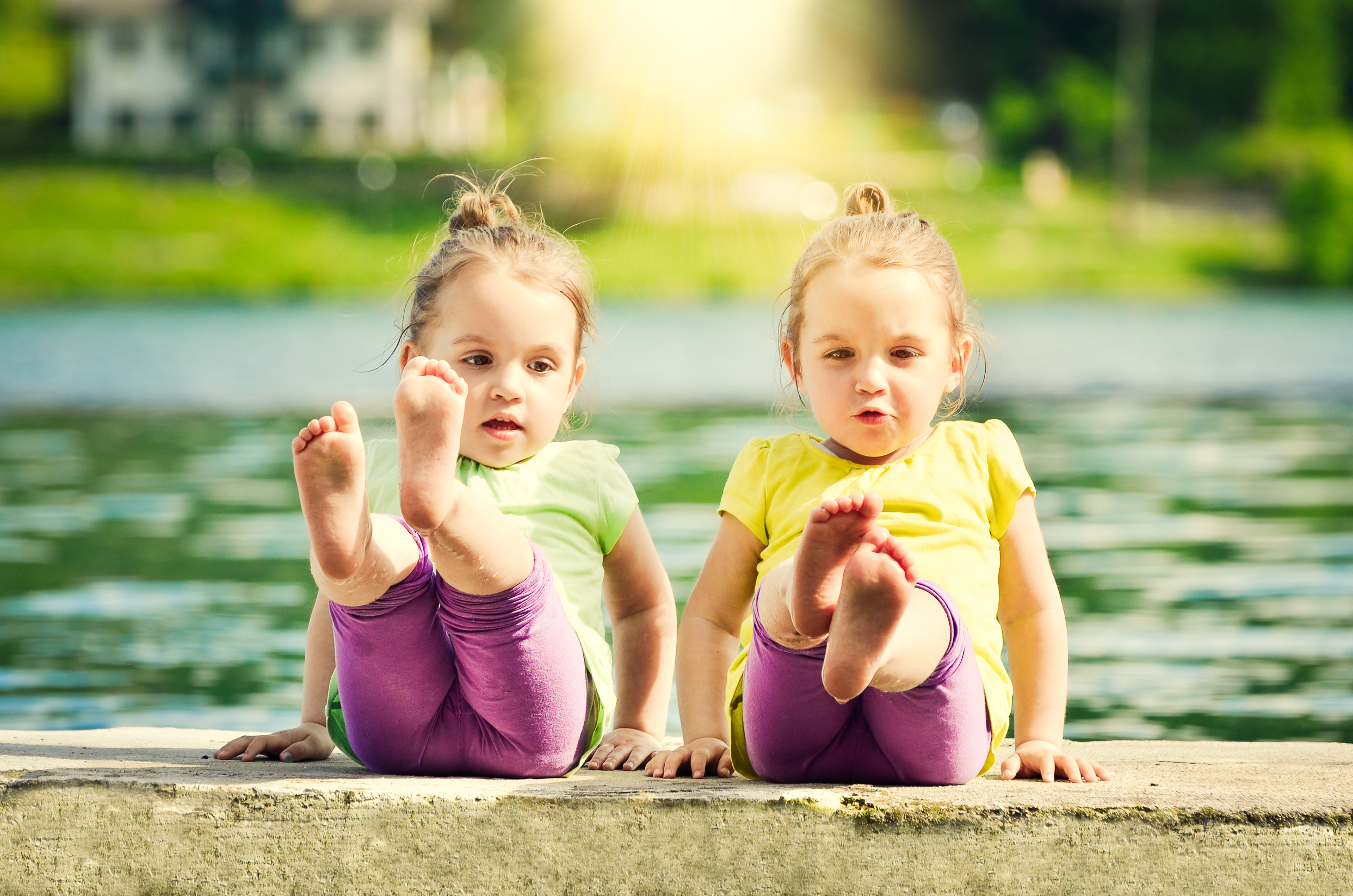
Include mindfulness for kids in your program to help children at your service discover the power of a meditative mind. The benefits of mindfulness and mindfulness activities are far-reaching.
Young school-age children and toddlers are susceptible to stress, just like adults. Various factors can contribute to this, such as school challenges, family conflicts, perceived expectations from adult figures and friendships. According to Government research, one in seven children and teens between the ages of 4–17 experiences a mental health issue every year in Australia.
Research suggests that teaching mindfulness practice and meditation are effective methods for helping children cope with stress and anxiety. In fact, meditation is included in the mental health and suicide prevention plan that the Australian government funded in 2020‑21.
By practising mindfulness for children, you can help children improve their focus, stress management, behaviour, emotion regulation, academic performance, interpersonal relationships and outlook on life.
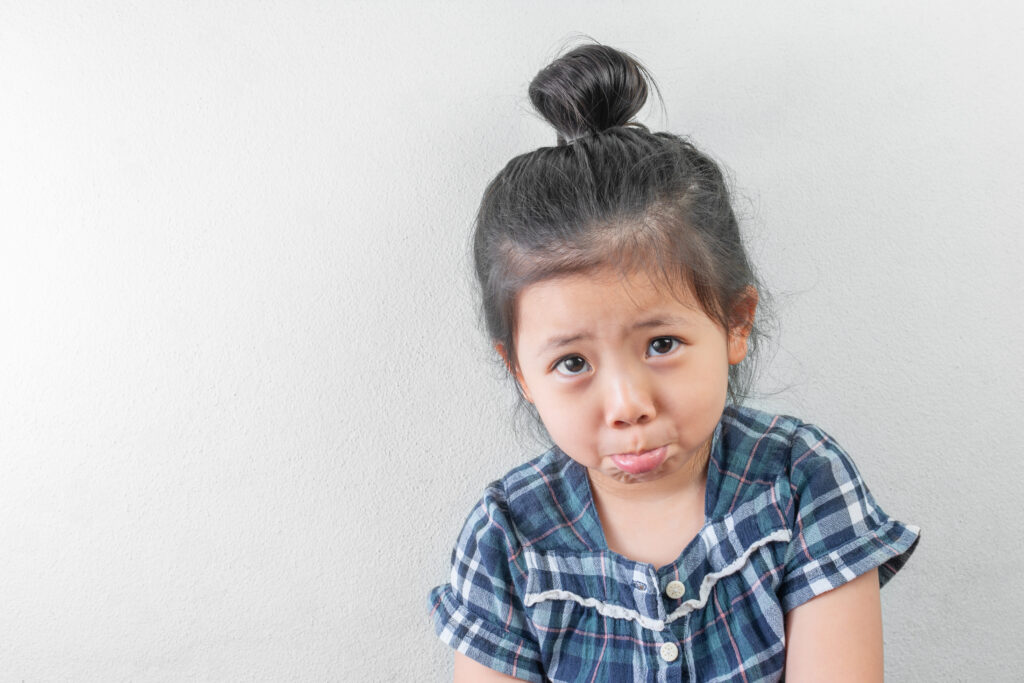
Activities to teach mindfulness to children in childcare
Mindfulness is simply being in the present moment. It can be practised by acknowledging your thoughts, paying attention to how your body feels and noticing what you see, smell, hear or taste. By practising mindfulness, we can sustain our awareness for longer periods. If you want to support children’s emotional and mental wellbeing through teaching mindfulness, here are some activities to help young learners connect with their thoughts, feelings and the present moment.
Mindfulness for kids—breathing exercises
When little ones are faced with unpleasant feelings, mindful breathing can help them stay calm whilst they attempt to deal with them. Introduce them to breathing exercises when they are relaxed, feeling good, willing to learn and ready to practice. Find a quiet space and time that are conducive to mindful breathing practice.
You can first teach them the ‘flower breath’, where you encourage them to think of their favourite flower and imagine smelling it. Guide them to calmly breathe through their nose and out through their mouth. Children can feel better by connecting with their breath and releasing tension in this simple way. Another kind of mindful breathing to try is the ‘hissing breath’, where they breathe in through the nose with long deep breaths and release it with a hissing sound coming out of the mouth. This technique is used to calm the mind and cool down the body.
During nap or story time, you can practice the ‘hibernating bear breath’ technique with children. They can do this by breathing in for four seconds, pausing for two, exhaling for four seconds and pausing for another two seconds before repeating. You may lead them through this five to seven times. It helps children to relax and may help soothe themselves to sleep.
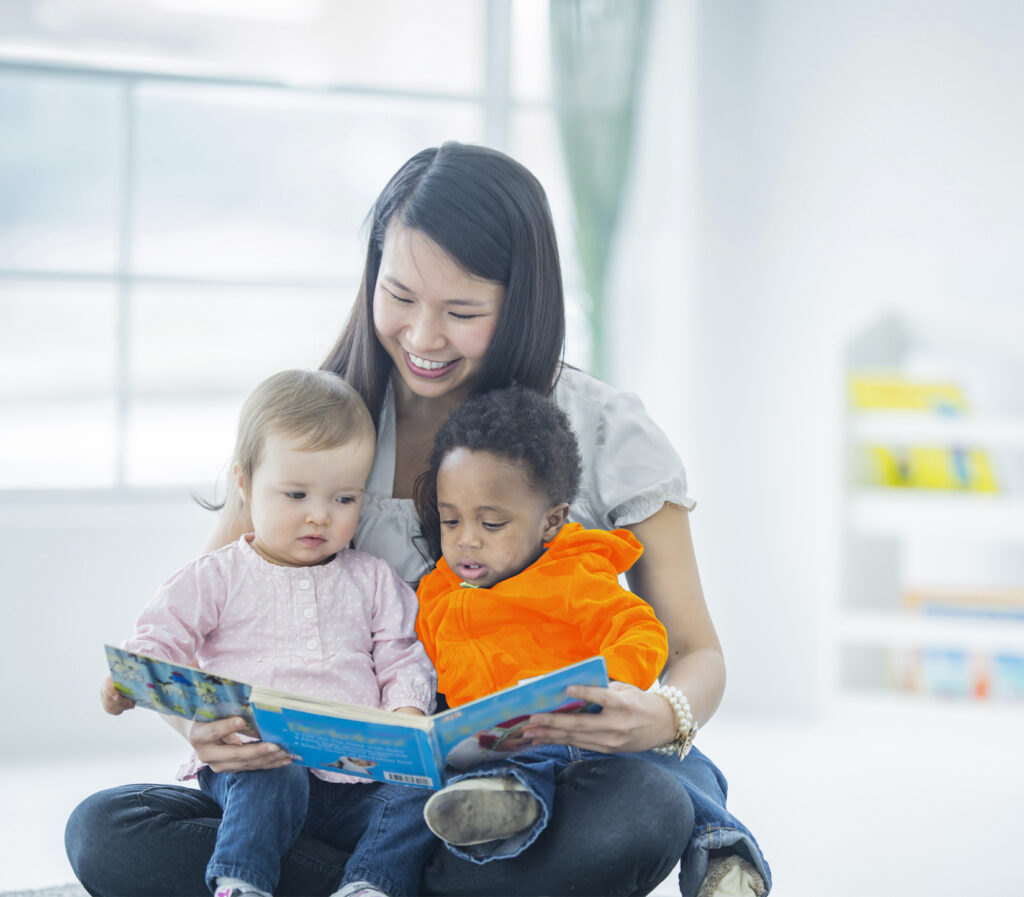
Teaching breathing exercises is imparting a lifelong mindfulness tool. Children can practise these breathing exercises anywhere, anytime and may find them helpful when experiencing difficult emotions.
Mindfulness for kids—beginner yoga
Because our bodies are designed to move, exercise and movement help reduce stress and anxiety, according to research. Practising yoga asanas (poses) is an excellent way to improve toddlers’ mental and physical health. The good thing about this yoga is that it doesn’t require any special skills or prior knowledge to practise it. You can start with easy asanas, like the tree pose, downward facing dog, cat pose, cobra pose, frog pose or lion pose.
Regular yoga practice will help children develop better body awareness, self-control and concentration while becoming spiritually connected and mentally and physically agile. Guide children through the poses and make sure that they’re comfortable. Assure them that it’s normal to stop holding a pose when they start feeling uncomfortable. Some poses need extra precautions, so be sure to research them thoroughly and consult an expert before practising with children.
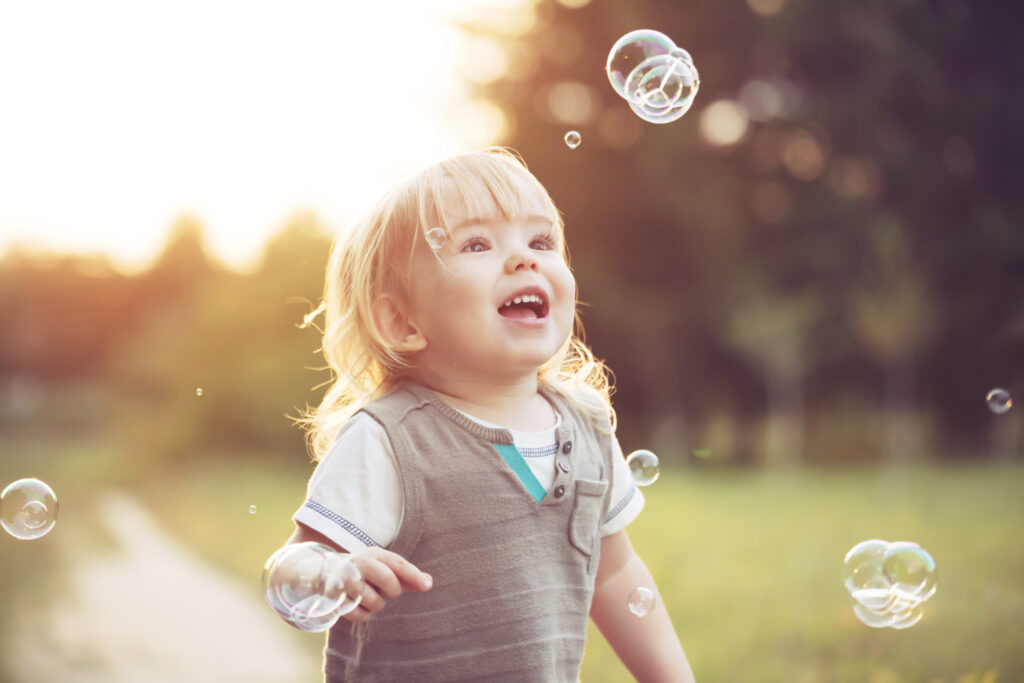
Mindfulness for kids—sensory engagement
One way to train a child’s ability to stay in the present is through sensory activities. The simple practice of counting the things they see, hear, feel, smell or taste can be an excellent way to remain present. Create opportunities for children to engage and explore their senses—playtime in a sandbox, tasting delicious and nutritious foods, finger painting, play dough, water play and so many more.
You can ask questions or play a game to make it more fun and exciting. For example, blindfolded children can touch things with different textures and share with the group what it feels like and what they think it is. This can also be done with food where they guess what snack, fruit, or vegetable they took a bite of while blindfolded. Besides helping children develop mindfulness skills, sensory play can also be beneficial to calming a child feeling anxious or stressed. Through these activities, they also make sense of the things around them.
Mindfulness for kids—nature time
Outdoor play has many benefits for young children, not only in terms of physical development and learning but also for their psychological and emotional wellbeing. Allocating time to go out, explore and observe the environment helps children develop their self-awareness and a sense of belonging.
During outdoor playtime or quiet time, encourage children to listen to the sounds of nature. Get them to look at the trees, flowers, sky, and birds and feel the breeze and the warmth of the sun. Little sensory observations like this in nature spark curiosity and creativity. Children who are connected to nature become more empathetic toward the plants and animals they share the world with. They develop an awareness that considers the needs of everyone they share their environment with, including animals, plants and other people. They learn to value every member of their community, respecting the diversity and complexity of others.
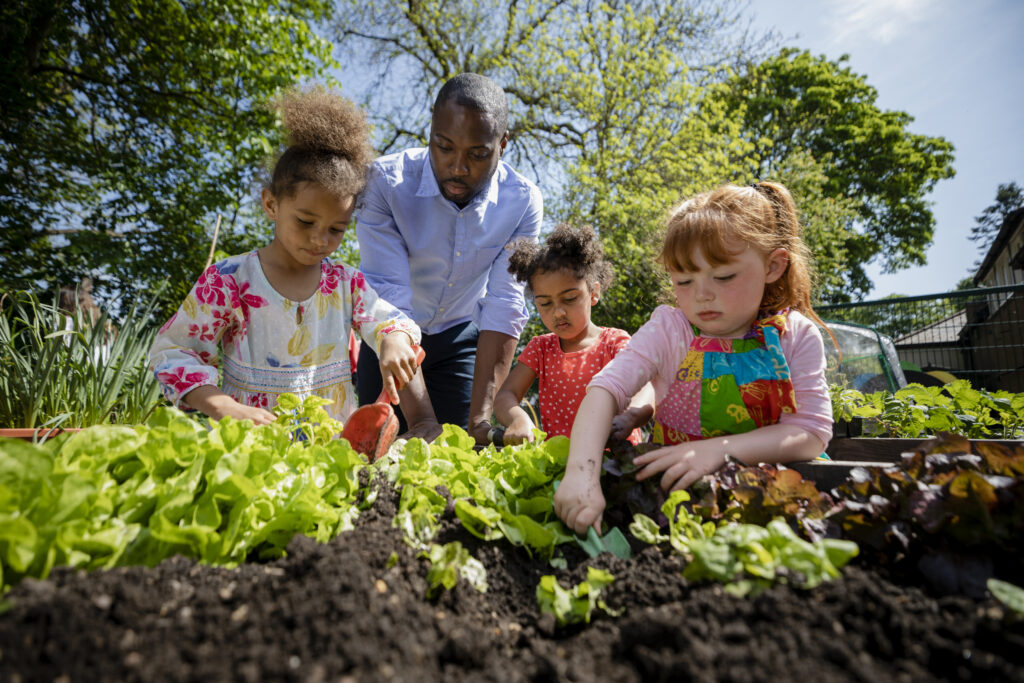
Scavenger hunts, gardening, blowing bubbles, walking and running are also practical outdoor activities you can use to practice mindfulness in nature with children.
Mindfulness for kids—colouring mandala art
A mandala is art formed by a series of circles, geometric patterns and symbols representing the infinite universe in Buddhism and Hinduism. They are used in mindfulness meditation practices and bring mental and emotional benefits. You can teach children to draw a circle on a piece of paper and mindfully outline shapes and patterns within the circle. Encourage them to colour it precisely and calmly.
You can play relaxing music while they carefully draw and colour to set the mood. Suppose you’re in a younger class of students who might find drawing challenging. In that case, you can download free mandala colouring sheets available online, print them and distribute them during the colouring session. Colouring the mandala can help improve a child’s hand-eye coordination, shape recognition, precision, focus and reasoning.
What are the benefits of mindfulness for children?
Emotional regulation and stress reduction
Coping mechanisms—Including mindfulness for kids in your program equips them with effective coping mechanisms for managing stress and emotional challenges. Mindfulness practices, such as deep breathing and focused attention, help children regulate their emotions and reduce anxiety.
Stress resilience—Mindfulness fosters resilience in the face of stressors. Children who practice mindfulness are better equipped to handle everyday pressures, navigate changes and maintain emotional well-being.

Improved concentration and cognitive skills
Enhanced focus—Mindfulness activities, such as meditation and mindful breathing, contribute to improved concentration. Children learn to direct their attention to the present moment, enhancing their ability to focus on tasks and academic activities.
Cognitive development—Regular mindfulness practice has been linked to enhanced cognitive skills, including improved memory, problem-solving abilities and creative thinking. These benefits positively impact a child’s overall learning experience.
Social and emotional intelligence
Empathy development—Mindfulness encourages the development of empathy and compassion. By fostering an awareness of one’s own emotions and the feelings of others, children build strong foundations for positive social interactions and relationships.
Conflict resolution—Mindfulness equips children with valuable conflict-resolution skills. By teaching them to respond thoughtfully rather than react impulsively, mindfulness promotes healthier communication and problem-solving in interpersonal relationships.
Integrating mindfulness into a child’s education and daily routine is essential for promoting emotional regulation, enhancing cognitive skills and nurturing social and emotional intelligence. These benefits contribute to the overall well-being and success of children in various aspects of their lives.
Document your efforts in teaching mindfulness to kids and share photos and videos with families with our educator app, Playground, to ensure you never miss a moment.
Sources:
- https://www.abc.net.au/news/2019-06-03/meditation-hailed-as-important-tool-for-helping-kids-with-stress/11168336
- https://www.opencolleges.edu.au/blog/2020/05/05/meditation-in-schools/
- https://www.luriechildrens.org/en/blog/ight-mindfulness-activities-to-try-at-home-with-kids/
- https://www.healthline.com/health/childrens-health/sensory-play



